Meyer Lemon (Meyer Lemon)
Citrus meyeri widely known among lovers of home citrus growing, common in many countries. In some of them it is also an industrial crop, occupying significant agricultural areas. It belongs to the classic hybrid varieties, differs significantly from the representatives of the "real lemons" group. In the description of his appearance, as in the recommendations for care, there are many contradictions. Let's get to know him!
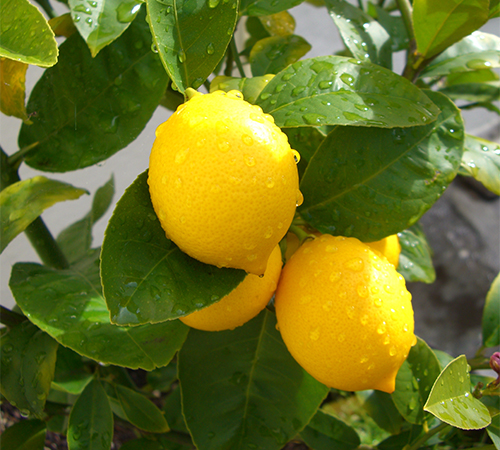
Origin of the variety
A person interested in Meyer's "biography" will immediately notice that many sources contain a phrase similar to the following: "The origin is not exactly known, there are many options and assumptions." But the same attentive person, continuing his search, will soon discover that there really is no "set of options", but there are only two versions:
1) Meyer originated in nature long ago, as a result of natural, spontaneous hybridization between oranges and lemons.
2) This is a kind of the so-called "Cantonese lemon", which was thoroughly worked on by Chinese gardeners-breeders many centuries ago. In any case, both plants are so close that some cytrologists suggest combining them into one species.
The plant that we now call the Meyer variety was and remains a popular tub crop in China, especially in the southeast of the country. Here in Beijing, he was noticed by the American botanist and businessman Franz Meyer, and brought several copies to his homeland.
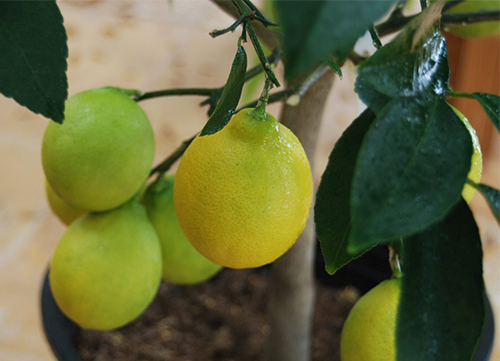
This event happened in 1908, and after a few years the newcomer was widely spread in the nurseries of California. Naturally, the Americans named the variety after its "godfather", although other variants of the name are still used in the world: Peking or Chinese lemon, Chinese dwarf. Agree, in historical justice, they are even more appropriate!
The twists and turns of lemon fate
One important event happened in the life of a Chinese tree on the new mainland. By the 40s of the XX century, being already a popular industrial variety, trouble overtook it. It turned out that almost all plants are carriers of the malicious tristeza virus, which killed millions of citrus fruits around the world. Those who did not die from the virus remained sterile. The specimens of Meyer themselves hardly suffered from the action of tristeza, but were asymptomatic carriers of the disease.
It was a verdict on the sort! The vast majority of his trees in the United States, and then in Europe, were destroyed.
But in 1950, the Californians managed to breed a variety of the Chinese dwarf, which practically did not become infected with the ill-fated virus. After numerous tests and checks, she was certified, and by 1975 she received permission for industrial breeding. The new clone began to be called the "improved Meyer".
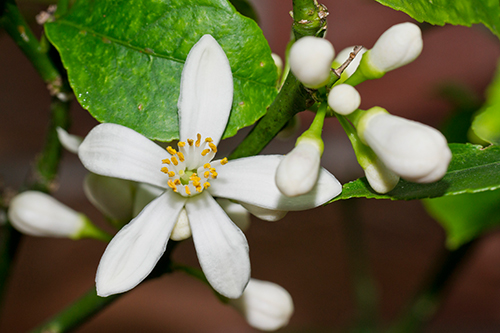
The problem is that in Europe and Asia there was no complete destruction of the "old clones", as happened on the American continent. Now they are mixed with the "improved version", so much so that sometimes without laboratory studies you will not understand who is in front of you. Tristeza continues to wreak havoc on citrus plantations.
There is also a distinct "Soviet trace" in the fate of our hero. Back in the 30s, he was introduced from America to the Soviet Union. Scientists from the Soviet Union, having studied the guest, came to the conclusion that it will grow well on the Black Sea coast of the Caucasus due to its increased winter hardiness. In addition, here they began to graft him on a tripolyate, and kept him in the open field. To the surprise of breeders, the "American" grafted on the tripoliate was significantly less infected with tristeza. Since then, it has remained one of the most popular in the Union, and many people still call it "Abkhazian".
Description of culture
It is excellent for indoor keeping, primarily due to its compact crown and quick fruiting.
Interesting! Seedlings of this citrus begin to bear fruit in the fifth, and sometimes even in the fourth year after sowing - an indisputable record among all varieties of lemon!
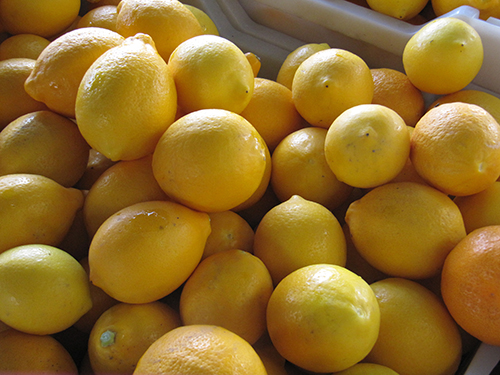
In addition, the fruits have excellent taste, and the tree itself is distinguished by increased decorativeness.
Features of the crown... At home, it grows to a height of 1.5 m, most often even lower. The shape of the crown is round, symmetrical. The Chinese dwarf tends to grow many side branches even without much human intervention. The thorns are small, there are very few of them on the branches.
A relative disadvantage is that citrus tends to grow not as a standard tree, but in the form of a bush. To create a stem, you have to do a special molding pruning in the very first years of the plant's life.
Meyer's foliage is thick, beautiful. The leaves themselves are small, rich dark green, very tough (denser than ordinary lemons), shiny. They are egg-shaped, with small jagged edges.
Interesting! The leaves of this plant, when rubbed in the palm of your hand, are devoid of the characteristic lemon scent. Their smell is also strong, but rather resembles an essential oil with a citrus tinge.
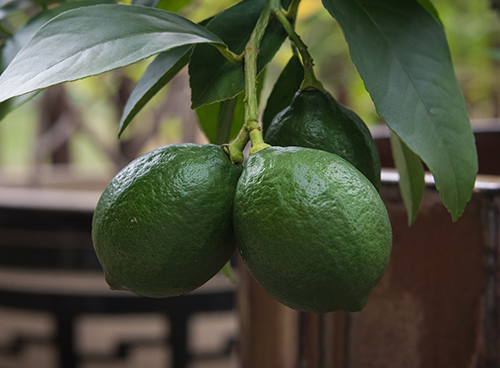
When kept indoors, this citrus tends to lose a lot of leaves in winter, sometimes they fall off almost completely. Inexperienced citrus lovers are intimidated by this fact, but you shouldn't worry too much. Usually in the spring, after an increase in daylight hours and an increase in air humidity, foliage grows back.
If you provide a cool wintering or additional lighting in winter, such a leaf fall does not occur. Apparently, this explains the scatter in the assessment of plant resistance. Someone considers it unpretentious, well tolerating dry air and lack of light, while others, on the contrary, complain that the variety is picky about keeping conditions.
Attention! By now, there are many forms and clones of Meyer. Indeed, they sometimes behave differently in grooming. This should be taken into account when introducing the "Chinese" into your collection.
And one more factor cannot be ignored when describing the crown of this citrus. It belongs to the most winter-hardy members of the family, adult specimens are able to survive a short drop in temperature to minus 10 ° C!

Flowering properties... A remontant variety, there are up to four flowering waves per season! As already noted, even seedlings bloom unusually early, and on cuttings, fruits can set in two seasons. True, at this age they are undesirable on the branches.
An important feature is that the buds appear on young shoots of the current year. They, like the blossoming flowers, have a pure white color, although some lines still differ in a barely noticeable, purple or bluish tinge. The flowers are small, about 3-4 cm in diameter, very fragrant.
Interesting! The pleasant smell of these flowers has an exciting effect on many people.
The buds are located in the crown in different ways. Singles predominate, but they often form small inflorescences.
Description of fruits... Meyer's fruit is easy to distinguish from all other members of the species. They are small, with an average weight of 80 to 120 grams, almost round in shape. Their color is unusual - bright yellow, rather even orange. It looks much more like the color of an orange. Remember the first version of the origin of the variety? The color of the fruit demonstrates it perfectly!
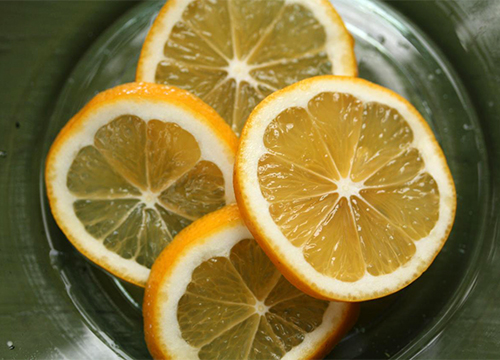
The skin is thin, easily separated from the pulp. The surface is smooth, shiny, devoid of characteristic tuberosity.
The plant is characterized by increased early maturity, sometimes only 8 months pass from bud to ripe fruit. Its disadvantage is its low transportability.To somehow compensate for this, fruits are picked slightly unripe, later they are able to ripen.
Important! Often, consumers note the excessive acidity of the fruit. Probably, the opinion was formed precisely from the tasting of insufficiently ripe specimens. A truly ripe Meyer is very sweet; it is arguably the sweetest of all lemons and can be safely eaten without sugar.
Other salient features:
- The pulp is unusually juicy, the weight of the juice is sometimes more than 51% of the weight of the fruit itself.
- The color of the pulp is yellowish, like an orange. The pulp is tender, fragrant, consisting of 6 - 10 slices.
- Most consumers note the unusual taste of the fruit. It is difficult to express in words, most often they say - "something is not lemon". In any case, along with a pleasant, delicate sweetness, there is a slight, refined note of bitterness.
- There are always a lot of seeds inside the pulp. Usually there are about a dozen of them, but there are more.
- Increased yield. Good specimens are at times simply dotted with small orange fruits.
Summing up
When describing our hero, we often used the word "unusual". Indeed, Meyer's lemon stands out among other varieties. Have you noticed that even the word "Lemon" is missing from its Latin name? Many experts, biologists, as already mentioned in passing, generally suggest not to consider it as such. But it is also impossible to "stick" the obstinate to another kind of citrus. He is different from everyone else - an individualist!
In the United States, and not only there, it continues to be a popular industrial culture. Along with this, it has earned itself a reputation as an excellent indoor plant. Flower lovers like its yield, early maturity, small size. It is also important that its branches root perfectly by cuttings. True, you cannot call it easy to care for, it has its own whims.
In order for Meyer to grow successfully in the house, it is important to organize him a cool winter with relatively humid air. This can be, for example, an unheated but insulated loggia. Ideally, the indoor temperature at this time of the year is between 5 - 12 ° C.
In summer, an abundance of light and also slightly high humidity are important. It will be great if the owner manages to take the pot with a tree to the garden, or at least to an open balcony, protecting the specimen from harsh sunlight.
If you create such conditions for him, Meyer's lemon will certainly thank the owner with a bountiful harvest and a magnificent decorative view!




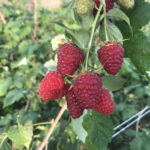
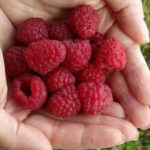



I tried several times to grow indoor lemons - I bought fruit-bearing trees, but the plants were capricious, and the taste of the fruits did not suit me at all. I already decided that good lemons do not grow at home until I got acquainted with Meyer's lemon - they gave me twigs for grafting - they grafted onto the wild easily and quickly, I think this is because the variety belongs to wild (natural) plants and is capable quickly adapt to new growing conditions. I can also say that Meyer's lemon tolerates drafts well (it stands on my cool windowsill), is not picky about air humidity - it does not shed leaves, buds and ovaries, it blooms relatively early (mine bloomed in the 3rd year) - it blooms constantly, fruits ties well without additional stimulation. But: he loves to "eat" very much (apart from fertilizers, I carry out soil treatment with boron or iron preparations, sometimes I spill it with a manganese solution), the plant requires frequent and strong pruning.I do not standardize the amount of ovary - it suits me when there are a lot of fruits and they are small in size - so they ripen faster, and lemons are quickly eaten, but they are not stored very well.
Meyer's lemon is not a hybrid of a lemon and an orange (-: If an ordinary lemon is a hybrid of a bitter orange (orange) and a citron, then a Meyer lemon is a hybrid of a sweet orange and a citron. That is, it is a separate species formed as a result of independent hybridization.
hybrid is not a hybrid. you will decide
I hear coniferous notes in the scent of Meyer's lemon.